Physiology Chapter 4 - Epithelial Tissues
0.0(0)
Card Sorting
1/37
Earn XP
Description and Tags
Study Analytics
Name | Mastery | Learn | Test | Matching | Spaced |
|---|
No study sessions yet.
38 Terms
1
New cards
Histology
The study of tissues
2
New cards
Tissue
A group of cells that are similar in structure (and therefore function)
3
New cards
Nervous Tissue
Brain, Spinal Cord, Nerves
\-Internal Communication
\-Internal Communication
4
New cards
Muscle Tissue
Skeletal (Bones), Cardiac (Heart), Smooth (Walls of hollow organs)
\-Contracts to cause movement
\-Contracts to cause movement
5
New cards
Epithelial Tissue
Lining of GI tract and other hollow organs; epidermis (skin tissue)
\-Forms boundaries between different environments; protects, secretes, absorbs, filters
\-Forms boundaries between different environments; protects, secretes, absorbs, filters
6
New cards
Hollow Organs
Organs that have a small or narrow cavity or lumen (aka hollow tube) inside them:
Esophagus, stomach, small intestine, gallbladder, fallopian tubes, and urinary bladder
Esophagus, stomach, small intestine, gallbladder, fallopian tubes, and urinary bladder
7
New cards
Types of epithelial tissues (2)
1. Covering or lining epithelium: outer layer of the skin and walls and organs of closed body cavity
2. Glandular epithelium: glands of the body
8
New cards
Functions of epithelial tissues (6)
1. Protection (GI tract)
2. Absorption (lungs)
3. Filtration (kidneys)
4. Excretion (sweat glands)
5. Secretion (glands release hormones)
6. Sensory Reception (nerve endings embedded)
9
New cards
Epithelium Special Characteristics (5)
1. Polarity (differences in structure, composition and, function between 2 parts inside 1 cell)
2. Specialized Contacts (fit tightly together via tight junctions/desmosomes)
3. Supported by connective tissue on the basal/bottom surface
4. Avascular (no blood supply) but innervated (penetrated by nerve endings)
5. Regeneration (stem cells in the lower layers)
10
New cards
Apical Surfaces
Top/Free surface = Exposed to an internal body cavity
11
New cards
Basal Surfaces
Lower/Bottom surface = Attached to a thin basement membrane above connective tissue
12
New cards
Classification of epithelia (2)
1. Cell Shape
2. Cell Layering (strata)
13
New cards

\
Squamous
14
New cards
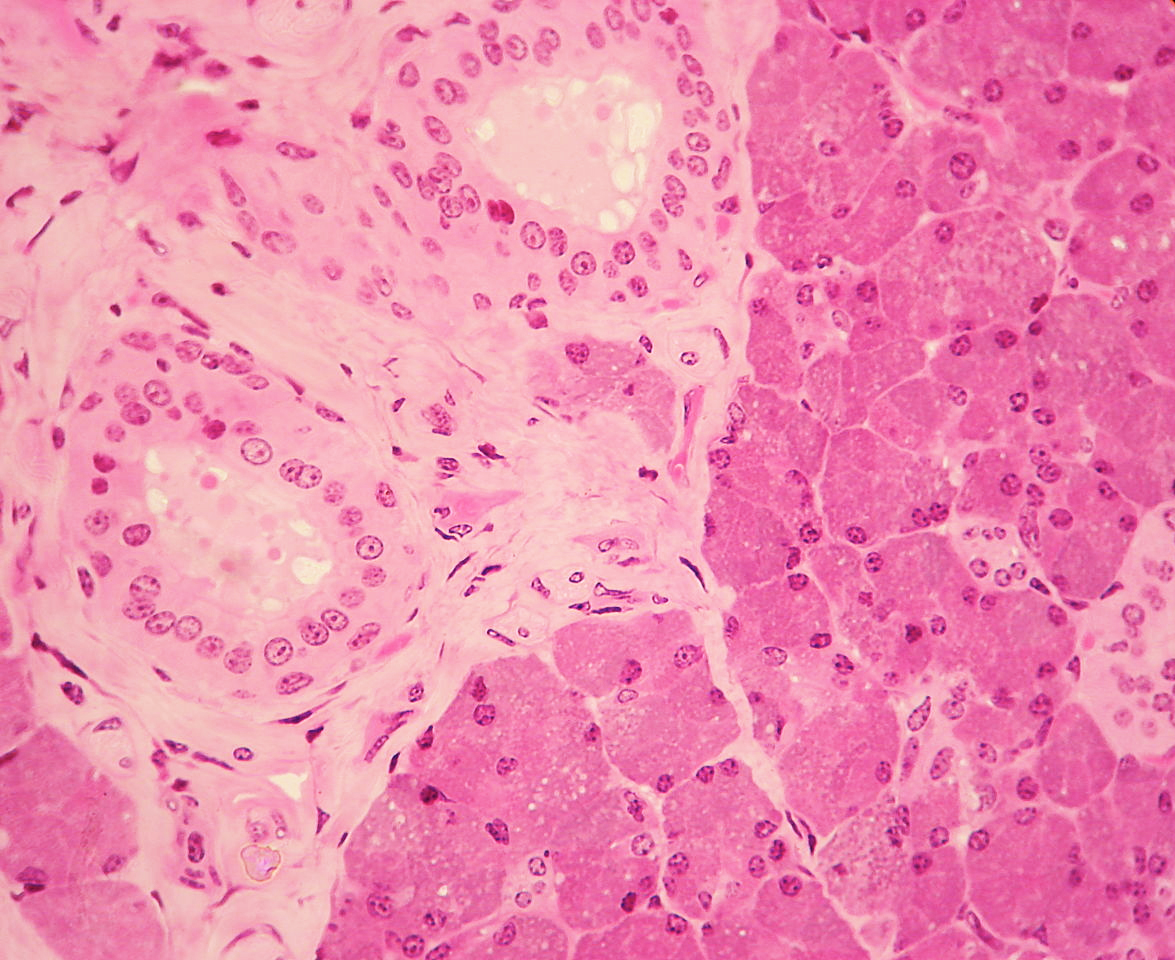
Cuboidal
15
New cards
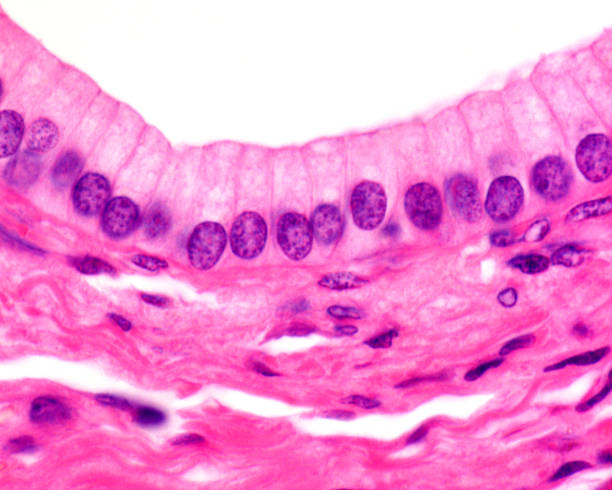
Columnar
16
New cards
Glandular Epithelia
One or more cells that makes and secretes an aqueous fluid (secretion)
17
New cards
Endocrine
Internally secreting (hormones)
18
New cards
Exocrine
Externally secreting (sweat)
19
New cards
Unicellular
One cell forming the gland (goblet cells)
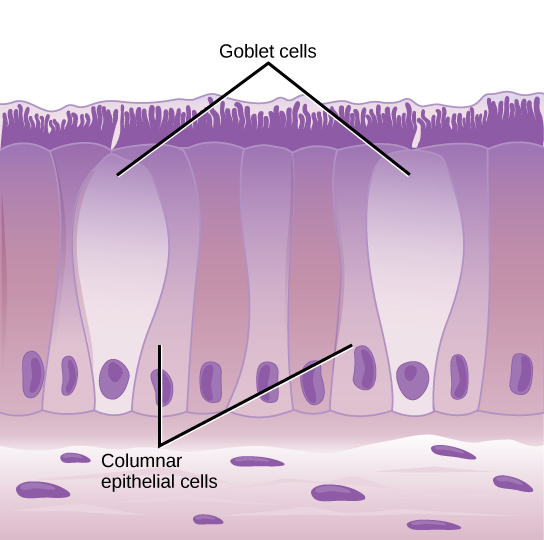
20
New cards
Multicellular
Multiple cells forming the gland (salivary)
\-Surrounded by supportive connective tissue that supplies blood and nerve fibers to the gland
\-Surrounded by supportive connective tissue that supplies blood and nerve fibers to the gland
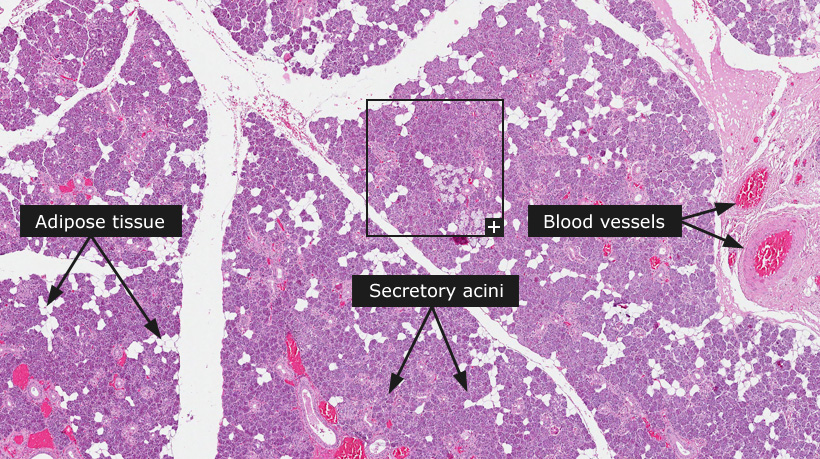
21
New cards
Simple Duct Structure
Duct that does not branch
22
New cards
Compound Duct Structure
Duct that branches off
23
New cards
Tubular Secretory Structure
Shaped like a tube
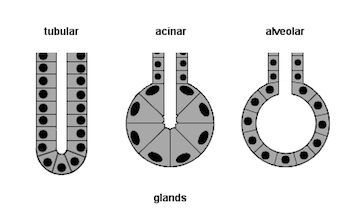
24
New cards
Alveolar Secretory Structure
Shaped like a sphere
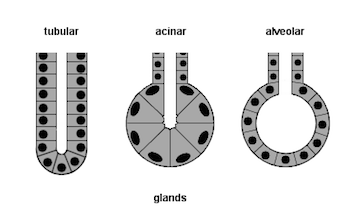
25
New cards
Merocrine
Secretes products by exocytosis (sweat)
26
New cards
Holocrine
Accumulates products within then ruptures (sebaceous oil glands aka pimples)
27
New cards
Apocrine
Accumulates products within, only ruptures out of the TOP/apex
28
New cards
What happens when you injure tissue? (3)
1. Inflammation Stage- Innate, non-specific response to tissue injury
2. Organization- Restores blood supply
3. Regeneration/Fibrosis- Proliferation of fibrotic connective tissue/Scar
29
New cards
Steps of Inflammation (2)
1. Increase capillary permeability (increases fluid leakage, seals off the wound, fluid accumulation/swelling + edema)
2. Clot formation (Stops bleeding + Prevents contamination)
30
New cards
Parts of Organization (5)
1. Granulation tissue formed
2. Capillaries form
3. Collagen fibers bridge gap
4. Macrophages phagocytize debris
5. Regeneration of epithelial cells
31
New cards
Parts of Fibrosis (3)
1. Regeneration - Epithelium + macrophages
2. Fibrosed area - Matures + contracts; epithelium thickens
3. Fully regenerated epithelium (Underlying area of scar aka fibrotic area)
32
New cards
Epithelial Membranes
Continuous multicellular sheet composed of at least 2 primary tissue types
33
New cards
Cutaneous Membrane
The skin/dry membrane; epidermis + dermis attached to each other
34
New cards
Epidermis
Keratinized stratified Squamous epithelium
35
New cards
Dermis
Thick layer of connective tissue
36
New cards
Mucous Membrane
Lines body cavities **open** to the exterior
\-Digestive, respiratory + urogenital organs
\-Wet/moist due to secretions or urine
\-Stratified squamous, simple columnar, or pseudostratified
\-Digestive, respiratory + urogenital organs
\-Wet/moist due to secretions or urine
\-Stratified squamous, simple columnar, or pseudostratified
37
New cards
Lamina Propria
Epithelial sheets that lie over loose connective tissue
38
New cards
Serous Membranes/ Serosae
Found in **closed** ventral body cavities (not open to the outside environment)
\-Moist
\-Enrich capillary fluid w/ hyaluronic acid (lubrication)
\-Allows layers to slide across each other
\-Simple squamous tissue on loose areolar connective tissue
\-Moist
\-Enrich capillary fluid w/ hyaluronic acid (lubrication)
\-Allows layers to slide across each other
\-Simple squamous tissue on loose areolar connective tissue